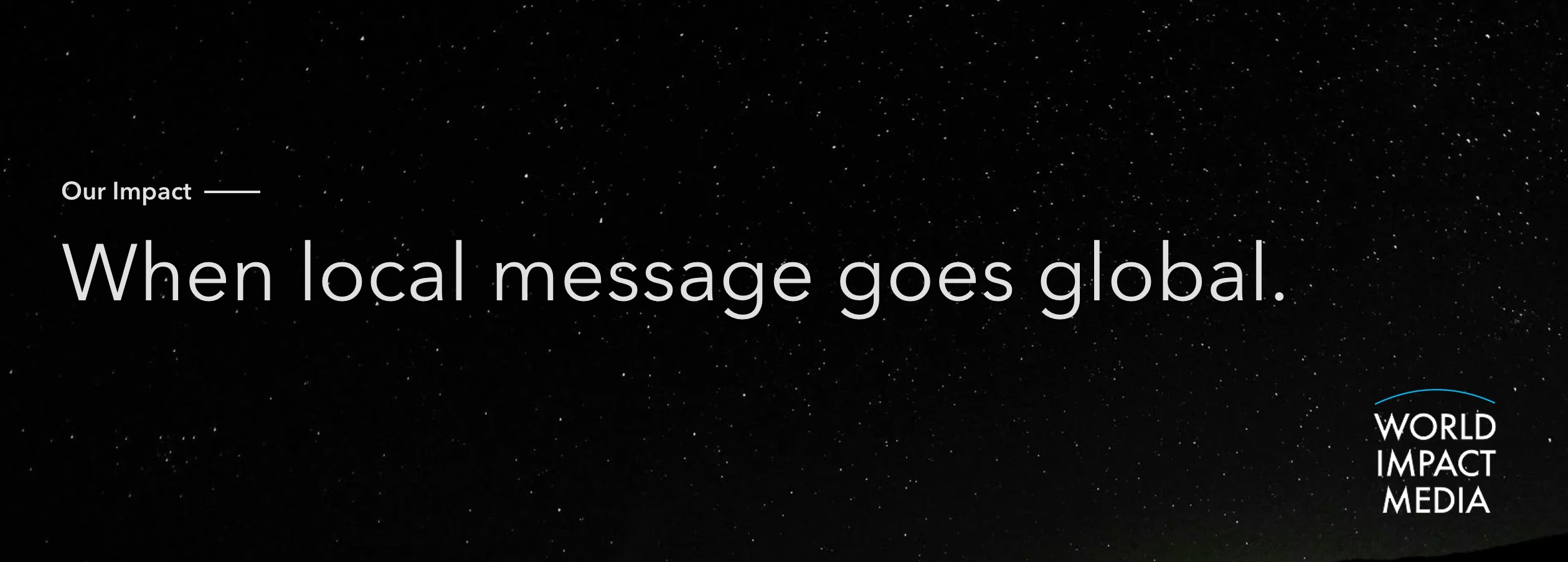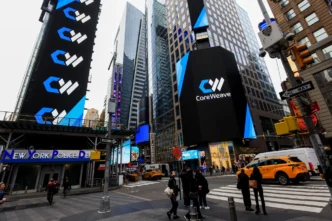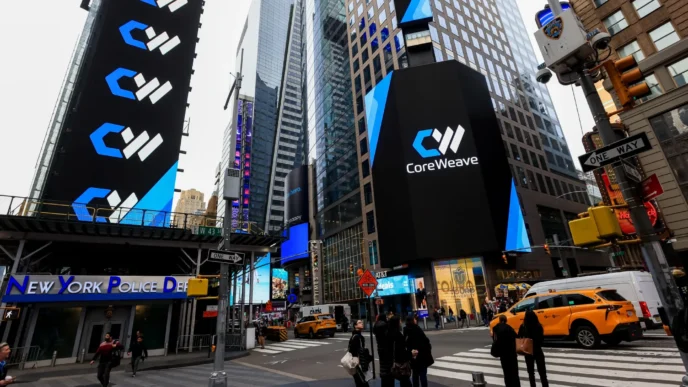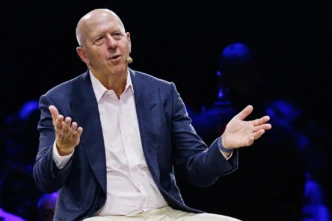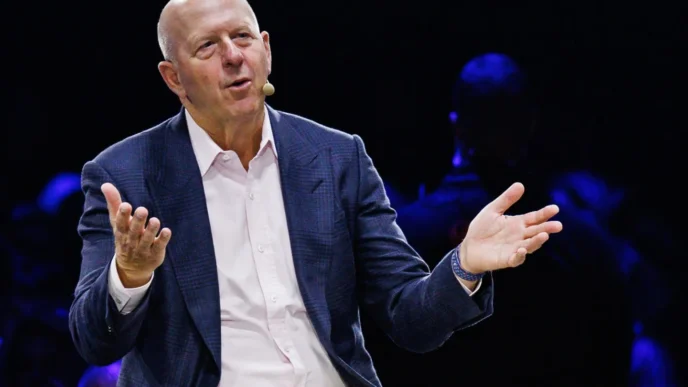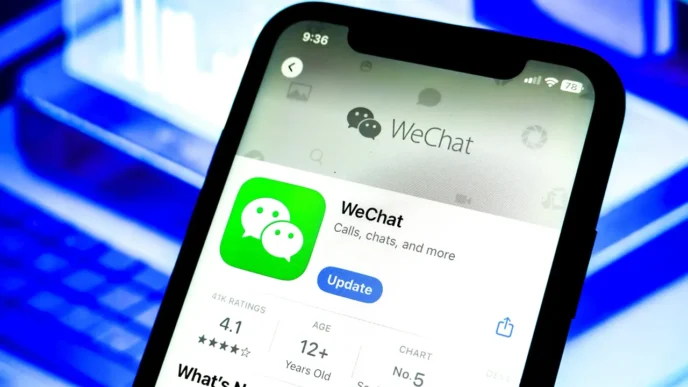Lagging sales of Wegovy and Ozempic reveal limits of the weight-loss drug frenzy and highlight growing pressure on Novo’s global expansion strategy.
A Fourth Forecast Cut Sends Warning Signals
In a surprise move that rattled investors and raised questions about the sustainability of the global obesity-drug boom, Novo Nordisk has once again trimmed its full-year forecast — marking the fourth downward revision in 2025. The Danish pharmaceutical giant cited slower-than-expected sales growth of its flagship weight-loss and diabetes drugs Wegovy and Ozempic, which have driven much of the company’s explosive rise in recent years.
Shares of Novo Nordisk fell sharply in early trading after the announcement, erasing billions from its market value and sparking concern that the red-hot obesity drug market may be cooling.
“While long-term demand remains strong, we are facing near-term challenges related to production, pricing, and patient adherence,” the company said in a statement.
The lowered outlook underscores a growing reality: despite unprecedented demand and cultural enthusiasm around new weight-loss drugs, the business of obesity treatment is proving more complex than investors — and perhaps even Novo Nordisk — initially believed.
Supply Bottlenecks and Manufacturing Constraints
One of Novo’s biggest hurdles remains supply chain strain. The company has struggled for over a year to keep up with overwhelming demand for Wegovy, a GLP-1-based injectable that became a household name for its ability to help patients lose significant weight.
Despite investing billions into new manufacturing facilities across Denmark, France, and the U.S., production has not scaled fast enough to meet global appetite. Novo’s factories continue to face bottlenecks in fill-finish capacity — the final stage of drug production — and shortages of the specialized materials needed for injection pens.
“We are operating at maximum capacity, but demand continues to exceed supply,” CEO Lars Fruergaard Jørgensen told analysts. “Our priority is to expand production responsibly while maintaining quality and safety standards.”
These persistent issues have forced Novo to ration supply in multiple markets, particularly outside North America, leading to slower sales growth in Europe and Asia.
Pricing Pressures and Competition Emerge
Adding to Novo’s challenges is intensifying competition and pricing pressure in key markets. Rival Eli Lilly has rapidly gained ground with its competing GLP-1 drugs, Mounjaro and Zepbound, which many studies suggest may deliver superior weight-loss outcomes.
In the U.S., insurers have begun to push back against the high cost of obesity treatments, tightening reimbursement policies and demanding discounts from drugmakers. Some state-level health plans have even paused coverage of Wegovy for non-diabetic use, citing soaring costs and limited long-term data.
These developments have forced Novo Nordisk to lower its pricing assumptions and brace for thinner profit margins in 2026.
“The initial wave of demand came with few pricing constraints,” said Sophie Lund, a healthcare analyst at Nordea Markets. “Now we’re entering a more rational phase where payers are demanding proof of value — and that will challenge Novo’s profitability.”
The Patient Adherence Problem
Beyond supply and pricing, Novo Nordisk is also confronting patient adherence issues — a less-discussed but critical challenge in the obesity market.
Clinical data and real-world evidence increasingly show that many patients discontinue treatment within six months due to side effects, cost, or difficulty maintaining the regimen. Because drugs like Wegovy must be taken continuously to sustain results, early dropouts mean lost recurring revenue for the company.
Novo has responded by launching patient education programs and exploring oral versions of GLP-1 drugs to improve convenience and reduce attrition. Still, analysts say that the long-term success of the obesity drug market depends on whether patients are willing — or able — to commit to lifelong treatment.
Wider Economic Ripples and Market Reaction
Novo Nordisk’s warning sent ripples across the broader healthcare sector. Shares of Eli Lilly and other weight-loss drug developers also dipped, as investors reassessed whether the so-called “miracle drug” market could continue its hypergrowth trajectory.
The GLP-1 class of drugs, initially developed for diabetes, has transformed the global pharmaceutical landscape, driving a market estimated to be worth more than $150 billion by 2030. Novo and Lilly have dominated the space, together commanding more than 90% of global market share.
But with supply constraints, reimbursement hurdles, and growing competition, analysts say the market is shifting from explosive expansion to strategic consolidation.
“The euphoria phase is ending,” said David Mahler, a biotech portfolio manager at Bernstein. “Investors are realizing that these are still pharmaceutical products with real-world constraints — manufacturing limits, cost barriers, and complex patient behavior.”
Novo’s Strategic Reset: Betting on Scale and Science
Despite the setback, Novo Nordisk remains confident in the long-term potential of its obesity portfolio. The company has outlined an ambitious plan to expand production capacity by more than 50% by 2027 and is ramping up investment in next-generation therapies.
Key initiatives include:
- New production plants in the U.S. and Europe designed to double output by 2026.
- Clinical trials for combination therapies that target appetite and metabolism simultaneously.
- Oral formulations of semaglutide to reduce dependency on injectables.
Novo is also betting on scientific diversification — exploring cardiovascular and kidney benefits linked to GLP-1 drugs, which could justify broader insurance coverage and secure regulatory approval for expanded use cases.
“This is a long-term journey,” Jørgensen emphasized. “We are building not just a product category, but a global health solution for one of the biggest challenges of our time.”
A Cautionary Moment for the Obesity Drug Revolution
For years, Novo Nordisk’s rise seemed unstoppable — a story of scientific breakthrough and cultural relevance that made it Europe’s most valuable company. But the latest forecast cut serves as a reality check for both the company and the industry it helped create.
The promise of obesity drugs remains enormous, yet the road ahead is more complicated than a single drug launch can solve. Supply, affordability, and patient access are proving to be as challenging as the biology of obesity itself.
As Novo Nordisk works to regain its footing, the world’s attention remains fixed on how the company will navigate the next phase — one that demands not just innovation, but execution at unprecedented scale.
For now, Novo Nordisk’s message is clear: the fight against obesity is far from over, but the easy gains are behind it.



